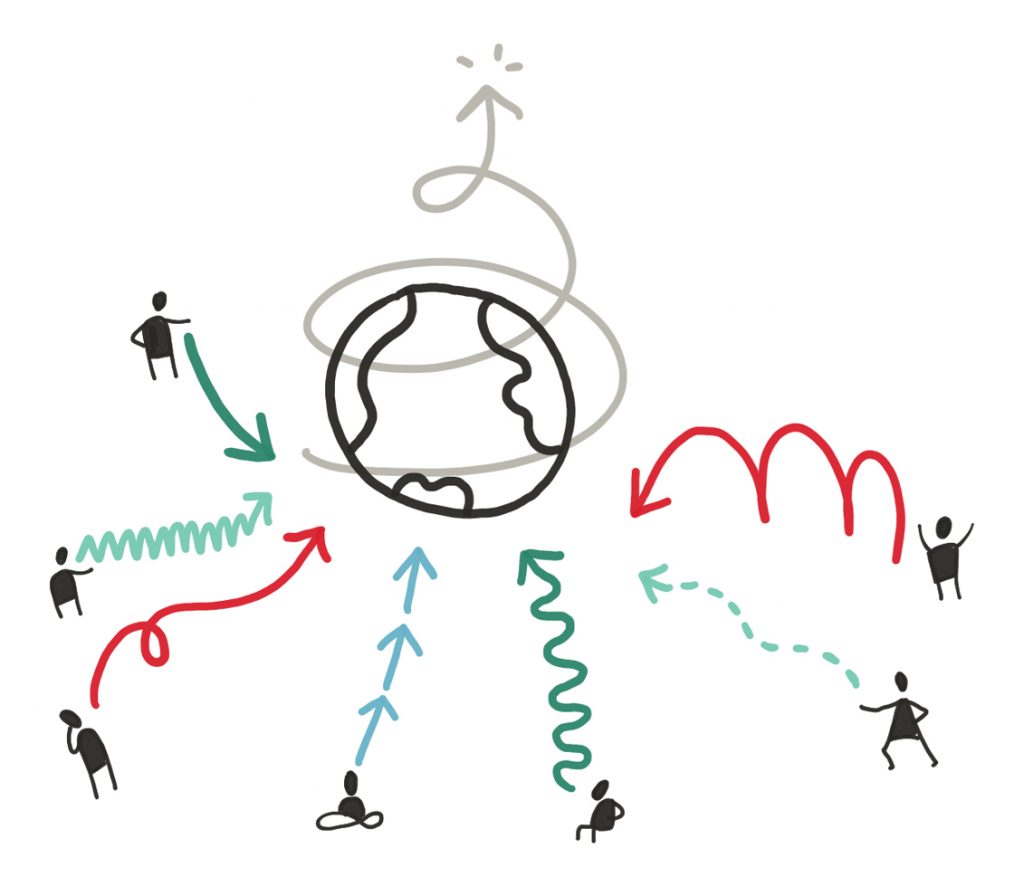Visuality, the brainchild of founder Mara Callaert, is a company run differently. Having gone through harrowing experiences when she was an employee and being someone who sees a problem as an opportunity, she put theory to practice.
She doesn’t call herself a boss or even a manager, and her approach when it comes to running Visuality may seem unorthodox to some. But the “proof is in the pudding”, and, over the past 3 (almost 4!) years, Visuality has grown from a start-up at her kitchen table, to a thriving company with 6 colleagues by her side.
Here Mara shares 6 principles that she uses to run Visuality:
1. Collective intelligence is highly valued
 The basic principle of Visuality is based on the concept of collective intelligence. This is the belief that there is a lot of intelligence within the whole and that everyone can contribute from a place where their talent can flourish. By collective collaboration, we use our intelligence to benefit our colleagues, clients, and society.
The basic principle of Visuality is based on the concept of collective intelligence. This is the belief that there is a lot of intelligence within the whole and that everyone can contribute from a place where their talent can flourish. By collective collaboration, we use our intelligence to benefit our colleagues, clients, and society.
2. Get rid of hierarchy
Although Visuality’s collaborators are contracted as employees, there is actually no hierarchy in practice. Nobody stands above someone else, and because what each person brings to the table contributes to the organisation’s collective intelligence, everyone is appreciated on the same level. At present, this is easy because we are still small. However, bigger companies can also avoid hierarchy by organising employees to work in highly autonomous working groups.

3. Have an ‘Agile’ mindset
Agile is about not overthinking, but instead prototyping and testing out new ways of working while actually doing it. It is a principle of learning and making processes better by adapting the strategy. This approach gives us the opportunity to spot pitfalls early in the process and to absorbs these challenges for continuous improvement. Whatever does not work is actually good because it is something that we can work with – we can change it. We are not going to implement new strategies or new procedures, we are just going to try it out and see if it works better. Of course, this needs a lot of attention and can have its downsides too. You need the right mindset, culture, and maturity of a group to be able to handle this.

4. Regular “check in” meetings
A big part of being able to work together in an innovative way is to make sure we have good communication between all our team members. We instituted weekly “Charli Monday” meetings. This is a moment every Monday where the team gathers around with coffee and croissants from Charli Bakery to share our knowledge and lessons learned, ask for feedback, and talk about tensions.

5. Team off-sites
Continuing with the theme of strong team communication – it has become a ritual to organise two off-sites a year with all the team members. By doing it twice a year, we get to know each other better on interpersonal level, which is always great, but also very helpful as we welcome new members to the team. Off-sites are also a moment to step back, look at how we’ve been doing, and strategize. As a result, our collective relational intelligence increases!
6. Meet every trimester
In addition to Charli Mondays and team off-sites, we meet once every three months to focus on the next three months. This is a great opportunity to look at where we are and where we’re heading. We implemented this three month meeting because sometimes new ideas come up at off-sites but they may be so far off that, without more attention, they may never happen. So we focus in on the next three months – it’s created a rhythm where innovation really happens.
Inspired by Mara’s story? Get in touch with us to know how we can help your organization thrive. We also made all the small illustrations for this article, did you know we could visualize your texts, too? 😉

